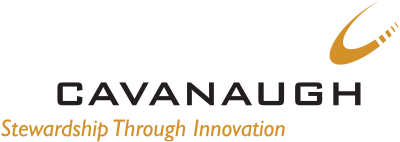Introduction
Alternative Meter Reading has become a popular subject among utilities over the last number of years. This is being driven by the constant restriction of operational budgets and an ever increasing pressure from customers regarding consistently increasing rates. Upon initial examination, it seems pretty simple for them to make the quick determination that reading their meters via radio or a fixed based system would improve efficiency and logically assume that improved efficiency would lead to lower operational costs. However, it seems that many utilities are converting over with little to no research or understanding about what they are getting into. Applying a simple Business Case Evaluation (BCE) would seem to provide a much more efficient and effective process for implementation.
Business Case Evaluation Defined
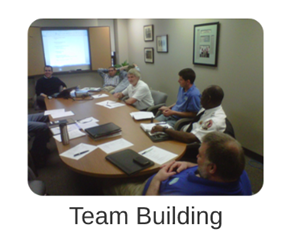 If asked to define the term Business Case Evaluation, there would likely be as many different descriptions as people defining. Most would probably include the financial aspect of Return on Investment or similar metric as the basis of the evaluation. While this certainly must be a part of the process, it is not the only aspect that should be evaluated. In our process, we begin with Team Building. In virtually every Utility that we have interacted with, there seems to be some level of disconnect between departments. This is very much normal and should be expected when considering that each department is unique in its goals and objectives. In most cases, they have not been through a project that involves virtually every department. The Customer Service Department has a much different role in the success of a Utility than the Operations Department, thus, their goals respective to a major capital project will be different. By bringing these groups together and having them express their thoughts to one another in a safe, open format, we have experienced a deeper understanding from all parties. While their personal objectives may not be altered, understanding the why of each other’s objectives can foster a more willing group dynamic.
If asked to define the term Business Case Evaluation, there would likely be as many different descriptions as people defining. Most would probably include the financial aspect of Return on Investment or similar metric as the basis of the evaluation. While this certainly must be a part of the process, it is not the only aspect that should be evaluated. In our process, we begin with Team Building. In virtually every Utility that we have interacted with, there seems to be some level of disconnect between departments. This is very much normal and should be expected when considering that each department is unique in its goals and objectives. In most cases, they have not been through a project that involves virtually every department. The Customer Service Department has a much different role in the success of a Utility than the Operations Department, thus, their goals respective to a major capital project will be different. By bringing these groups together and having them express their thoughts to one another in a safe, open format, we have experienced a deeper understanding from all parties. While their personal objectives may not be altered, understanding the why of each other’s objectives can foster a more willing group dynamic.
From this effective Team Building, the group can work towards a collective list of Key Objectives. Key Objectives are simply defined as a checklist of items that at the very end of the project,
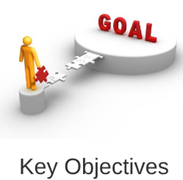 must be successfully achieved to be able to deem the project a success. These can be very simple, tangible metrics or could possibly include less tangible, more emotional aspects of the outcome of the project. One important aspect of developing the Key Objectives is the separation from Nice to Haves. In this process of brainstorming, there most certainly will be innovative, out of the box ideas that are proposed. If accomplishment of the key objective is not directly related to the success of the project, then it does not have a place on the list.
must be successfully achieved to be able to deem the project a success. These can be very simple, tangible metrics or could possibly include less tangible, more emotional aspects of the outcome of the project. One important aspect of developing the Key Objectives is the separation from Nice to Haves. In this process of brainstorming, there most certainly will be innovative, out of the box ideas that are proposed. If accomplishment of the key objective is not directly related to the success of the project, then it does not have a place on the list.
Another important aspect of the BCE process is an in-depth look at the current technology available. Specific to the 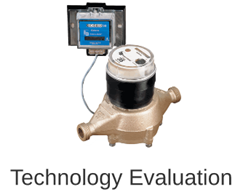 Alternative Meter Reading field, technology is changing and improving rapidly. It is often very overwhelming to utility officials to be constantly bombarded with product salesman, pitching the latest features and benefits of their products. The Technology Evaluation not only fleshes through the latest and greatest on the market, but takes an additional step to review the application to the specific system performing the evaluation. Not all technologies are applicable for each situation. Products are generally sold on a “one size fits most” mentality, but when making a capital investment of this magnitude, determining what the best fit for a particular utility is crucial.
Alternative Meter Reading field, technology is changing and improving rapidly. It is often very overwhelming to utility officials to be constantly bombarded with product salesman, pitching the latest features and benefits of their products. The Technology Evaluation not only fleshes through the latest and greatest on the market, but takes an additional step to review the application to the specific system performing the evaluation. Not all technologies are applicable for each situation. Products are generally sold on a “one size fits most” mentality, but when making a capital investment of this magnitude, determining what the best fit for a particular utility is crucial.
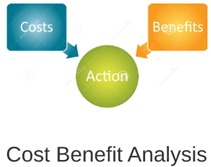 As mentioned earlier, a Cost Benefit Analysis is an essential component of any BCE. Large capital investments must be examined to determine their financial feasibility. This generally involves the development of a project budget, implementation schedule and summary of ongoing impacts to operational costs. These numbers can be reviewed with staff to determine if the project fits within the framework of the existing rate structure and guidelines for return.
As mentioned earlier, a Cost Benefit Analysis is an essential component of any BCE. Large capital investments must be examined to determine their financial feasibility. This generally involves the development of a project budget, implementation schedule and summary of ongoing impacts to operational costs. These numbers can be reviewed with staff to determine if the project fits within the framework of the existing rate structure and guidelines for return.
The final step in the process is the blending all of the components into a Decision Matrix. Each Utility will have a varied importance they will place on each of the key objectives and financial metrics. Additionally, there are any 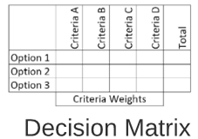 number of implementation strategies that are possible including procurement method and schedule for the various systems deemed to be able to meet the key objectives. Including a simple weighting system to each component, allows them to be reviewed and compared to each other in each of the different scenarios being proposed. This ultimately will lead to a clear framework of system type, procurement process and implementation schedule that best accomplishes the collection of key objectives.
number of implementation strategies that are possible including procurement method and schedule for the various systems deemed to be able to meet the key objectives. Including a simple weighting system to each component, allows them to be reviewed and compared to each other in each of the different scenarios being proposed. This ultimately will lead to a clear framework of system type, procurement process and implementation schedule that best accomplishes the collection of key objectives.
Summary
The Business Case Evaluation Process can allow any Utility a concise, logical mechanism to effectively evaluate making a change to an Alternative Meter Reading System. The process removes barriers currently impacting internal department collaboration and allows for collaborative consensus on what defines the success of the project. From there, the Utility can develop a firm implementation plan to strategically move forward on the project. Additionally, the Utility can utilize the process on future capital project decisions.

